
This article is part of an exciting series we launched in 2018 called Today’s Wonder Women – designed to celebrate the inspiring, impactful, empowering and extraordinary things ordinary women are doing every day. Over the coming months we will be sharing interviews, essays, articles and guest posts about women who are creating change. If you have a story to share and want to add your voice to the Today’s Wonder Women conversation, get in touch by emailing info@girltalkhq.com.
You’d think by now, in the year 2019, comprehensive sex education would be a no-brainer. With numerous studies here in the United States showing that schools implementing fact-based, medically accurate sex education leads to healthier youth, whereas abstinence-only programs lead to higher rates of teen pregnancies and STIs, this shouldn’t be such a contentious issue.
Sadly, it still is, not just in the US but in other countries too where conservative and religious influence prevent youth from having access to information and education that can help guide them to make the right choices. The fact is human beings have sex. And we need more youth advocates engaging teens and students in a way that can transcend barriers and ideology in order to have healthy ideals about sex and sexuality.
One group out of Canada is doing something really cool and mixing sex education with performance theater, enabling important messages and technical biological information to be dispensed via sketches on stage. SExT, or Sex Education by Theatre, was founded by Shira Taylor, who is a performer, director, producer, and doctoral candidate in Social and Behavioural Health Sciences at the University of Toronto. For her dissertation, she is exploring the use of theatre as a pedagogical tool for sex education, which led her to found SExT.
SExT has been performed to rave reviews at two of Canada’s largest theater festivals, and in front of thousands of high school students. Shira works with Indigenous youth in the Northwest Territories as an evaluation consultant and facilitator with the arts-based, trauma-informed sex ed program FOXY/SMASH. Shira is also a proud recipient of the TD Michaëlle Jean Bursary, awarded to a young person who has demonstrated excellence in using the arts to address issues of concern in Canada for her work with SExT. We wanted to speak to this wonder woman about the work she is doing and why she is passionate about sex education.

How did the idea for SExT come to fruition?
Fourteen years ago, as a nervous freshman, I sat in the audience at a University-mandated ‘theatre for social change’ spectacle performed by upper-year students using pop culture references to tackle topics ranging from ‘doing laundry for the first time’ to ‘diversity’ to ‘mental health’. Being an 18-year-old science major and actress/singer with very limited laundry experience, I remember relating so intensely to the scenarios playing out that I wanted to jump on stage myself – and I did just that as soon as the opportunity to perform for a new cohort of students arose. As an audience member, and later as a performer and director of this initiative, I remember feeling the energy in the packed hall viscerally shift from one of awkwardness, anxiety, and isolation, to one of relief, joy, and community.
Five years ago, as a doctoral student on a mission, I walked into one of Canada’s most diverse and over-populated high schools located in an immigration destination of Toronto, with the idea of making sex education more comprehensive, relevant, and impactful by emboldening youth to sing, rap, and dance about everything from chlamydia to homophobia to racism. This visit led me to create the peer education program, SExT: Sex Education by Theatre, as my PhD Thesis (Public Health, University of Toronto) to empower youth from communities where talking about sex is cultural taboo to take center stage. Our main goal is to encourage young people to reflect on, challenge, and communicate their realities and celebrate their unique identities through performance art. Youth are invited to tackle current issues head-on in a non-judgmental environment that promotes education, discussion, creativity, and personal discovery.

What was your own sex education experience like growing up?
I have one single memory of formal sex education. It involves my Grade 9 gym teacher putting a condom on a wooden penis, followed by a heated debate between two girls in the class over whether you could “lose your virginity” via tampon or horse-back riding. While I failed to receive any meaningful sex education in school, I did grow up in a very liberal Jewish home where healthy and humorous references to sexuality were often made unfiltered by my parents and grandparents at the dinner table. I remember my parents sitting me down as a small child to read the book “Where did I come from?” by Peter Mayle, which taught me that “vagina” rhymes with “Carolina” and led me to be very intrigued by the “tickle that starts in your stomach and spreads all over.” I also remember a breakfast table routine where my mom would read relevant articles from the daily newspaper aloud from a “knowledge is power” perspective and challenge me to think critically about age-appropriate newsworthy scenarios. I believe my unfiltered access to knowledge growing up is to credit (or blame) for my being drawn to stigmatized topics professionally. In the case of sex education, I was always fascinated by the concept that so many adults choose to prioritize “protecting” children from sexual knowing on moral, cultural, or religious grounds, despite decades of unequivocal evidence of the devastating physical and mental health consequences of this knowledge restriction.
There seems to be so many countries, even in the developed world, where there is still so much fear-mongering and regressive attitudes toward comprehensive sex ed. Why do you think these problems still exist today?
While so much controversy continues to surround sexual matters, research continues to dictate that lack of comprehensive sex education is having devastating public health consequences around the globe and in our own backyards. This is true more than ever in an increasingly demographically diverse North America, where rates of youth sexually transmitted infections (STIs) are rising amidst a backdrop of inequitable access to sexual health education and services. Most strikingly, at the center of all this drama, yet commonly silenced, are young people who need and deserve to be equipped with the skills and confidence to make healthy decisions in an ever complex and media-driven world.

All that said, I try very hard to stay away from the “us” vs. “them” narrative that is so pervasive in politics. I think it’s important to recognize that people are the product of their sociocultural influences and that people on all sides of this debate truly are just trying to protect their children the best way they know how. One thing I’ve learned through working in communities with values that differ from my own is that acceptance of and respect for differences is paramount. For me, this is what comprehensive sex education is about. It’s about creating a space where people of all belief systems and identities feel safe and respected and can co-exist. My doctoral research shows that educational approaches that are comprehensive, non-judgmental, culturally relevant, engaging, and, quite simply, fun are most effective at creating a culture of acceptance and promoting health and well-being.
Have you received any backlash since starting the organization?
The area where I started SExT and recruited our cast of peer educators is a popular immigration destination of Toronto with a majority South Asian Muslim population. This community has received significant media attention as the hub of protests opposing comprehensive sex education. Despite the conservative reputation and realities in the area, SExT has actually been extraordinarily well-received by young people, teachers, and service providers in the community. A performance that stands out in my mind is one at our cast’s home high school around the time of the anti-sex ed protests. It struck me that students in the audience were squealing with glee and recognition at a scene about homophobia performed partially in Urdu (the official national language of Pakistan), steps away from a park where young children had recently been “homeschooled” on the grass in protest of sex education.
One of my main goals with SExT is to embrace culture as enriching the sexual health conversation as opposed to as a barrier to discussing these topics. Our show features music, dance, language, and clothing from the diverse countries of origin of cast members including Pakistan, Bangladesh, China, Jamaica, Ghana and Ethiopia. Students need to see themselves represented in the education they receive in order for learning to be personal relevant and lead to real behavior change. By embracing the rich cultures of our cast, we are able to make the show relatable and inclusive to peer audiences. In terms of parents, we receive mixed responses. Some parents are very supportive.

For others, the messages of our show are clearly out of sync with their cultural and religious values. In one case, a parent who came to the show expressed disapproval about her daughter learning such lessons outside of marriage, yet the daughter later reported that her mother had become much more open in discussing these topics following the performance – to the point that her daughter was the one embarrassed! The reality is, not all anecdotes involving parents end as sweetly. Youth still choose to participate because they believe so strongly in the work and we are constantly trying to strike a balance between promoting health and well-being while still showing respect for their parents and culture.
How do you combine your work at the School of Public Health at the University of Toronto with SExT?
I started SExT as my PhD. Thesis at the Dalla Lana School of Public Health at the University of Toronto and thanks to SExT’s success and the time commitment I happily devote to it, I am still a PhD candidate there (a topic best avoided if you come across my mother or thesis supervisor). My quantitative and qualitative research has been able to demonstrate that SExT leads to significant improvements in the personal and social development and sexual health self-efficacy of youth participants.
Can you tell us about the reactions you have gotten from students since beginning this program?
When I first walked into my cast’s high school, I asked to pitch my idea to a charismatic student/ class clown. The young man I spoke to responded that the concept sounded cool, but that no girl in this religious community would talk to me about sex. Not wanting to take his word for it, I immediately asked to speak to a girls’ gym class. I was a few seconds into my pitch when a young girl shot up her hand to volunteer. Her classmates enthusiastically followed and in that moment, I knew I was on to something special. Five years later, that first girl to volunteer is still performing with us and recently debuted a very moving rap about her experience being gay and from a very religious family. Youth dedication to the project has been its number one asset.

When I was first recruiting, I was warned to expect high drop-out rates, but instead, our numbers would grow week to week and almost 5 years later, 10 of the 19 original cast members are still involved, with many rising to production roles. Audience response has been overwhelmingly enthusiastic. Whether we are performing in downtown Toronto or a remote Indigenous reserve, students react with comparable levels of engagement from the first lyrics of our opening song, “Let it Flow,” a parody of “Let it Go” from Disney’s Frozen about puberty to our closing Song, “Bodak Consent,” a parody of Cardi B’s Bodak Yellow. Feedback forms see our show consistently rated at 5/5 (and sometimes 5000/5), with students reporting increased awareness, inclusive attitudes, and intention to make healthy choices.
How has theatre become a medium through which important messages can be shared?
Youth need to relate to their sex education to take it seriously, which is rarely the case when lessons are delivered by uncomfortable teachers or out-dated films. A great deal of what is known about the use of theatre in sexual health interventions can be credited to the developing world. The AIDS pandemic in Africa is said to have given rise to a ‘theatre of necessity,’ with music, drama, and dance used to provide education and support. I chose theatre for its unique ability to make sex education personally relevant and to actively engage young people on complex issues both intellectually and emotionally. Theatre is adaptable to specific community contexts and theatre exercises can provide the necessary distance and safety to support students in learning and practicing communication skills and healthy decision making.
In our play and music videos, we feature a diverse cast of young people who look like youth in Canada and the US in 2018. They’re listening to the same music, they’re rocking the same dance moves, and here they are modeling how to enact consent and other crucial lessons in a really relatable way. For example, one of our Peer Educators, Lauren Chang (aka Ms. G) wrote the lyrics to “Bodak Consent” in response to her frustration around not being able to go out dancing with her friends without one of them being touched against their will. She chose to parody Cardi B’s hit song, “Bodak Yellow,” since she was inspired by the fact that it’s a song by a female rapper that all of her friends knew the words to.

In creating the choreography for “Bodak Consent,” SExT peer educators had the chance to embody precarious situations that youth encounter and practice navigating them in a safe space. By performing these scenarios for their peers and in our Bodak Consent music video, they are modeling how to deal with difficult and common situations in the era of cyberbullying and #MeToo. Lauren describes feeling powerful and in control of her body while rapping as her alter ego Ms.G. This is the power of theatre for sex education.
Can you break down some of the most common myths about sex ed that you help dismantle through SExT?
Myth 1: When kids learn about sex, they are more likely to have sex:
False. Fake News! The empirical research consistently shows that sex education does not make kids more sexually active. However, comprehensive sex education that is non-judgmental, scientifically accurate, and teaches communication skills, does make kids less vulnerable to risky situations, more likely to ask for help should they find themselves in a tough situation, and more likely to form healthy relationships free from abuse and sexual coercion. Similarly, learning about sexual diversity does not make kids gay. It may, however, create safer school environments with less bullying and improve mental health outcomes for youth struggling with their sexual identity and other challenges.
Myth 2: Adults know what’s best for children and must “protect” young people from sexual knowing:
The reality is, being a young person today is very different from being a young person even five years ago. This is a real question we received from a 12 year old girl on tour: “A boy in my class keeps asking me to send him nudes – do I have to?” We believe protecting youth means giving them the answers to these questions and supporting them in developing the self-awareness, critical thinking skills, and the confidence to make safe and healthy choices. A cursory look at the behavior of many of our politicians and celebrities is further evidence in support of an informed and empowered next generation.

Myth 3: Sex education has to be awkward and uncomfortable.
With the right approach, sex ed can actually be enjoyable, hilarious, meaningful, and impactful. In SExT, we embrace the awkwardness that accompanies conversations around sexuality. We use humor to dispel tension. In our opening song about puberty, a young man holds his crotch and sings to the tune of Disney’s Frozen, “I got a pitched tent in the middle of math class. Couldn’t keep it down heaven knows I tried.” We put young people at ease by having their peers model that it is okay to have questions and to talk about these issues. We engage students emotionally through high-quality raps and songs that tell very personal stories of triumphs and struggles related to homosexuality, abuse, and identity. We humanize and normalize these issues.
As well as schools, you also perform at festivals and work with Indigenous groups in parts of Canada. Why is this an important aspect of SExT?
In 2016, we brought our previously semi-private community-based show public at the Toronto Fringe and SummerWorks, two of Canada’s largest theatre festivals, to rave reviews (4 stars & Critic’s Pick – NOW Magazine; Exceptional Ensemble – The Torontoist). This was a big milestone for us as it introduced our cast of 1st and 2nd generation Canadians from a priority neighborhood of Toronto with previously limited access to the arts to Canada’s theatre scene as active and celebrated participants. It also gave us the chance to challenge adult audience’s preconceptions of youth, sexuality, and diversity and attracted the attention of key policy-makers. Last March, after a performance at a sexual health symposium, I was approached by Roxanne Ma, Senior Manager of National Youth Awareness Programs at the Canadian Foundation for AIDS Research (CANFAR).
I had actually noticed Roxanne beaming in the audience throughout our performance and after a brief chat with her, I was the one beaming. Within 2 months of this happenstance encounter, SExT had embarked on our first National Tour in partnership with CANFAR. We are now celebrating the completion of our first National tour reaching over 4000 students in schools and Indigenous reserves in areas of Canada most affected by HIV and the release of two music videos, “Bodak Consent” and “Tunnel Vision.” Our time on the reserves was very special. Some were extremely remote and many youth had never before experienced theatre and had limited access to sex education.
What most struck me, however, were the commonalities. The audiences laughed and cried at the same parts of the show. No matter how remote the community, our Donald Trump character representing HIV – in this case standing for “Hugely Incredible Virus” – got thunderous laughs. After cast member, Mary Getachew performed her original song, “Tunnel Vision” about leaving an abusive relationship (now a music video), a little girl in Grade 6 approached her and said, “I can tell you’ve struggled because I’ve struggled too. And I think it’s so brave that you put your struggle into art.” We hope our show inspires youth in these communities to do just that.
What do you envision seeing in society if more youth had access to shame-free sex education that was inclusive?
I believe a society with widespread access to inclusive and shame-free sex ed would be a much healthier society, both physically and mentally. We would see less #MeToo scandals, less Kavanaugh-esque trials, less bullying, less self-harm and suicide, less people in abusive situations. If the practice catches up with the research and we finally win the battle for comprehensive school-mandated sex education, we will be able to focus our full attention on creating and implementing innovative and engaging arts-based sex education programs that are effective and can be replicated across the globe.
For those who are reading about your work and are inspired to change the sex education landscape in their own area (perhaps in different countries), where would you encourage them to start?
My number one piece of advice is: Listen to youth! Young people know their realities and know what they need. They understand their families, cultures, and communities and therefore have invaluable local insight. They are also often hilarious, which brings me to my second piece of advice: Embrace humor! Teachers are often afraid of strong youth reactions, but effective sex ed teaches young people that all their natural reactions are valid and makes them feel safe to question and explore. Finally, I would encourage sex educators to find opportunities to embrace and celebrate culture. The controversy surrounding sex ed so often has religious and cultural undertones. I, therefore, choose to view culture as something to welcome into the discourse and to create an educational environment where we can respect and celebrate our differences.
Where do you see yourself and the work of SExT in 10 years?
My long-term goal is to expand the reach of SExT’s innovative and effective approach so every young person is equipped with the knowledge and skills to recognize and avoid unhealthy situations, to know their options should they find themselves in a precarious situation, to feel empowered to set boundaries, and to confidently explore their own identities on their own terms. We are currently planning a second National tour in partnership with CANFAR and hope to continue touring widely in the coming years. Program sustainability is a priority, including ongoing training of new cohorts of sexual and mental health peer educators, as well as supporting other communities in replicating our approach. I would like to expand our mentorship program and to create more opportunities for youth to take on leadership positions and grow within our organization. I also plan to leverage youth know-how in creating more online content to expand our reach, including a strong social media presence and new music videos. I’m all about dreaming big, so I’m certainly not ruling out a documentary, reality tv show, Broadway show and feature film in the next decade ☺
Finally, what makes you a powerful woman?
When I first read this question, my honest reaction was, “Oh man, this is a hard one.” But I then remembered that one of the most important lessons I hope youth take away from SExT is to learn to acknowledge, to own, and to use their power and I’m always trying to practice what I preach. I think that I am a powerful woman because I have had the fortune of being surrounded by strong female role models who have built me up and lead by example. I am relentless in going after what I believe in and was, therefore, able to turn a crazy idea in my head (featuring teens and rapping sexually transmitted infections) into a program that I am very proud of and that has real-world impact. I also always try my best to act with open-mindedness, integrity, and compassion, putting people first and have found myself surrounded by an incredible team of young people who have joined me in using their power to improve the health and well-being of their peers and activate their communities.
Learn more about SExT and find resources on comprehensive sex education, visit the website.











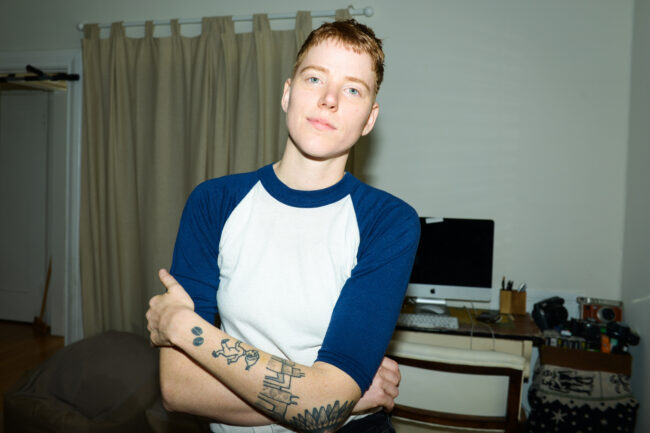
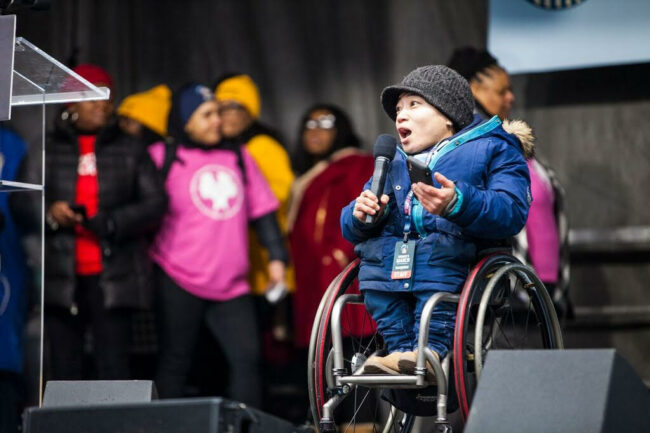

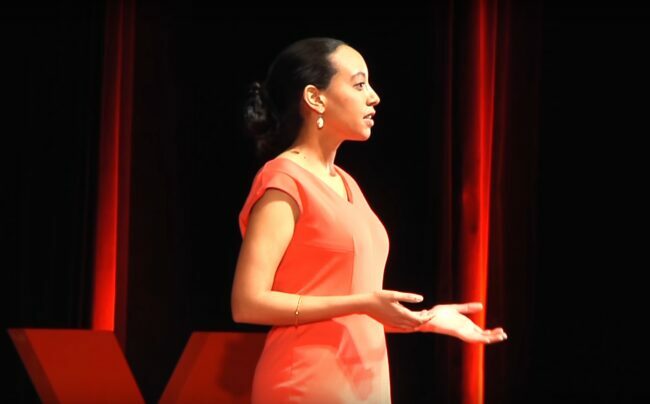
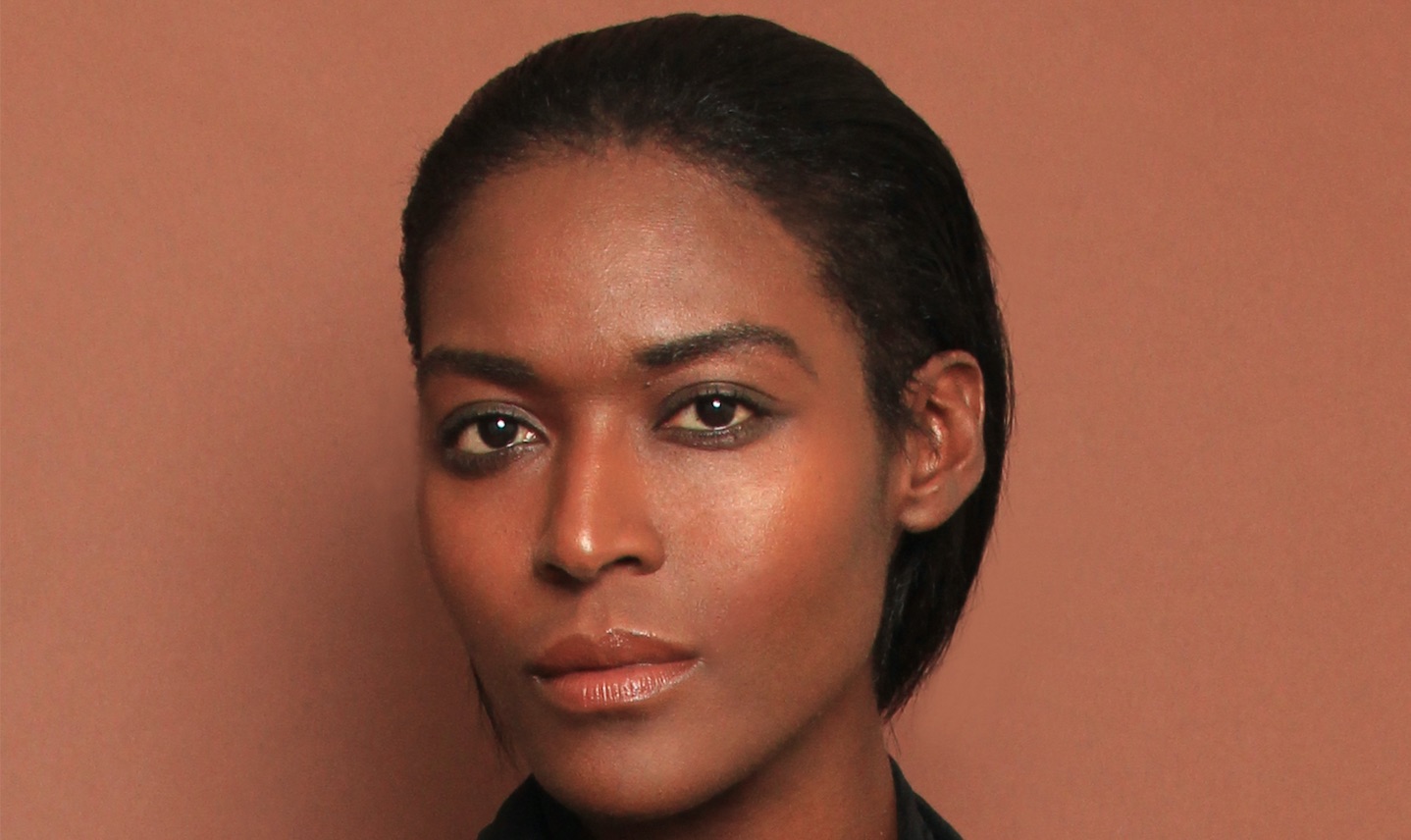
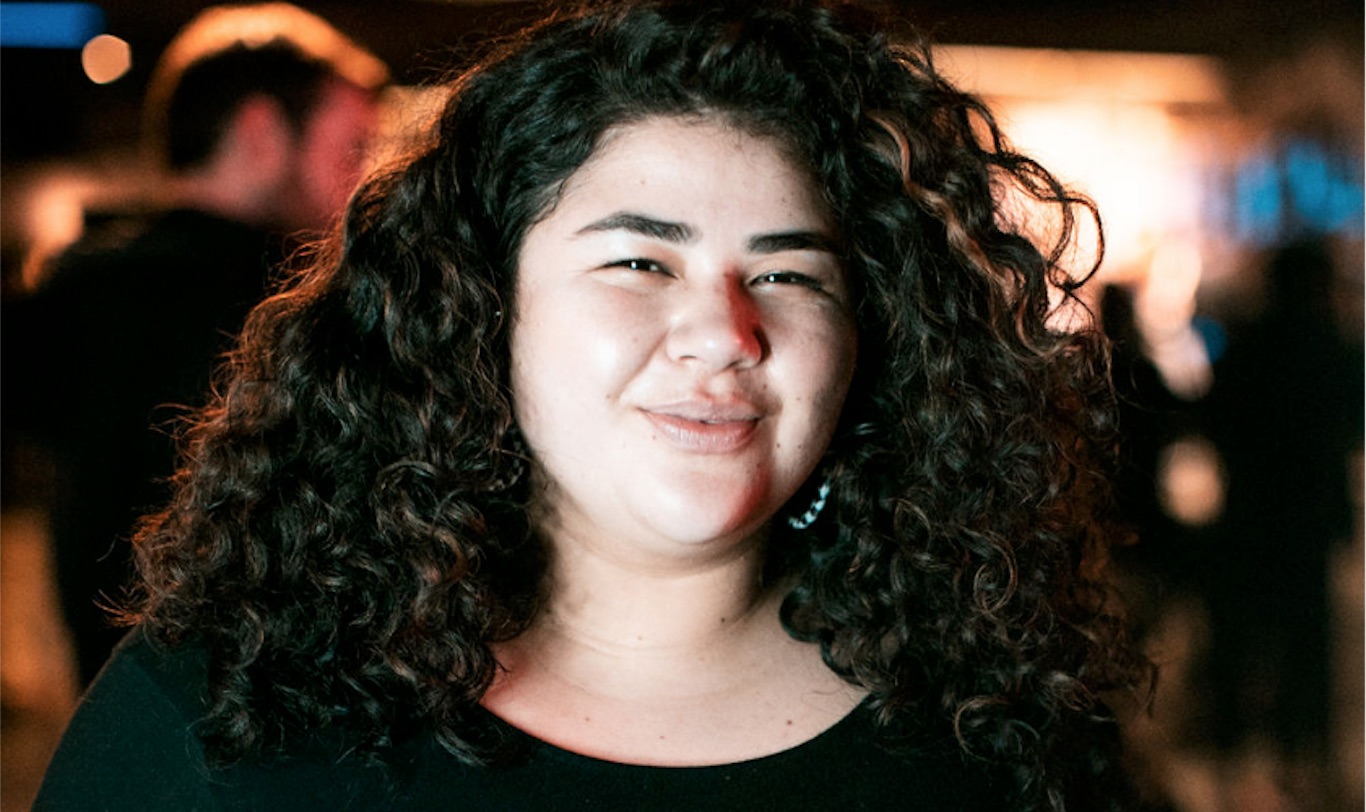
One thought on “Artist & Public Health Advocate Creates Org. That Teaches Sex Education Through Theater Performance”